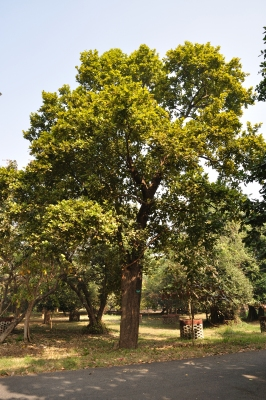Chhattisgarh Switch to Hindi
Violation of Article 21
Why in News?
The Chhattisgarh High Court ruled that no one can force a woman to undergo a virginity test, as it violates Article 21 of the Constitution, which guarantees her fundamental right to life, liberty, and dignity.
Key Points
- Background of the Case:
- A petitioner sought a virginity test for his wife, alleging she was in an illicit relationship.
- He challenged a family court order which had rejected his request.
- Court’s Stand on the Virginity Test:
- The High Court ruled that no woman can be forced to undergo a virginity test.
- It stated that such a test violates Article 21, which guarantees dignity and personal liberty.
- Allowing a virginity test would violate fundamental rights, natural justice, and a woman's dignity.
- The High Court reaffirmed that the right to personal liberty under Article 21 is absolute and non-derogable.
Article 21- Protection of Life and Personal Liberty
- No person shall be deprived of his life or personal liberty except according to procedure established by law.
- This fundamental right is available to every person, citizens and foreigners alike.
- Article 21 provides two rights:
- Right to life
- Right to personal liberty
- The Supreme Court of India has described this right as the ‘heart of fundamental rights’. This implies that this right has been provided against the State only.
- The state here includes not just the government, but also, government departments, local bodies, the legislatures, etc.
- The right to life is not just about the right to survive. It also entails being able to live a complete life of dignity and meaning.
- Case Laws:
- AK Gopalan Case (1950): Until the 1950s, Article 21 had a bit of a narrow scope. In this case, the SC held that the expression ‘procedure established by law’, the Constitution, has embodied the British concept of personal liberty rather than the American ‘due process’.
- Maneka Gandhi v. Union of India (1978): This case overturned the Gopalan case judgement. The idea of personal liberty in Article 21 has a wide scope including many rights, some of which are embodied under Article 19, thus giving them ‘additional protection’. The court also held that a law that comes under Article 21 must satisfy the requirements under Article 19 as well.
- That means any procedure under law for the deprivation of life or liberty of a person must not be unfair, unreasonable or arbitrary.


Jammu & Kashmir Switch to Hindi
PM to Inaugurate Vande Bharat Train
Why in News?
The Prime Minister of India is going to inaugurate the first Vande Bharat train to Kashmir in April 2025. The train will cover the journey from Katra to Srinagar in just three hours, significantly reducing travel time.
Key Points
- Expanded Railway Connectivity in Kashmir:
- Currently, railway services operate between Baramulla-Srinagar and Sangaldan in the Kashmir Valley.
- Officials confirmed that with the new connection between Sangaldan and Katra in Jammu, trains can now run across the entire stretch.
- The inauguration will mark the completion of the 272-km Udhampur-Srinagar-Baramulla Rail Link (USBRL) project.
- Climate-Specific Features of Kashmir’s Vande Bharat Train:
- The train is equipped with advanced heating systems to withstand sub-zero temperatures.
- The driver’s front look-out glass includes embedded heating elements for defrosting and maintaining visibility in harsh winters.
- Anji Khad Bridge:
- On the Katra-Banihal section, the train will traverse the Anji Khad Bridge, an engineering marvel.
- It is India's first cable-stayed rail bridge located in Jammu and Kashmir’s Reasi district. It is part of the Udhampur-Srinagar-Baramulla Rail Link (USBRL) project.
- The bridge spans 725.5 meters with a 331-meter-high pylon, built to withstand winds up to 213 km/h and support trains traveling at 100 km/h.
- It utilizes 96 cables of varying lengths (82 to 295 meters) and an innovative hybrid foundation to stabilize the mountain slopes.
Vande Bharat Trains
- It is an indigenously designed and manufactured semi high speed, self-propelled train that is touted as the next major leap for the Indian Railways in terms of speed and passenger convenience since the introduction of Rajdhani trains.
- The first Vande Bharat was manufactured by the Integral Coach Factory (ICF), Chennai, as part of the ‘Make in India’ programme, at a cost of about Rs. 100 crore.
- The Vande Bharat was India’s first attempt at adaptation of the train set technology compared with conventional systems of passenger coaches hauled by separate locomotives.
- The train set configuration, though complex, is faster, easier to maintain, consumes less energy, and has greater flexibility in train operation.


Uttarakhand Switch to Hindi
Uttarakhand Renames 18 Places
Why in News?
Uttarakhand Chief Minister announced change in the names of 18 places located in Haridwar, Dehradun, Nainital and Udham Singh Nagar districts.
Key Points
- Objective Behind the Name Changes:
- The Chief Minister stated that the renaming initiative aims to respect public sentiment and preserve Indian culture and heritage.
- He emphasized that the new names will inspire people by honoring great personalities who contributed to Indian culture.
- Renamed Places:
- In Haridwar District:
- Aurangzebpur (Bhagwanpur block) → Shivaji Nagar
- Ghaziwali (Bahadrabad block) → Arya Nagar
- Chandpur (Bahadrabad block) → Jyotiba Phule Nagar
- Mohammedpur Jaat (Narsan block) → Mohanpur Jaat
- Khanpur Kursali (Narsan block) → Ambedkar Nagar
- Idirispur (Khanpur block) → Nandpur
- Khanpur (Khanpur block) → Shree Krishnapur
- Akbarpur Fazalpur (Roorkee) → Vijay Nagar
- In Dehradun:
- Miyanwala → Ramjiwala
- Peerwala → Kesri Nagar
- Chandpur Khurd → Prithviraj Nagar
- Abdulpur → Daksh Nagar
- In Nainital:
- Nawabi Road → Atal Marg
- Panchakki to IIT Road → Guru Gowalkar Marg
- In Udham Singh Nagar:
- Sultanpur Patti Nagar Panchayat → Kaushalyapuri
- In Haridwar District:


Maharashtra Switch to Hindi
Tadoba-Andhari Tiger Reserve
Why in News?
Maharashtra’s Tadoba-Andhari Tiger Reserve (TATR) has implemented new measures to streamline safari operations and enhance guest convenience.
Key Points
- Enhanced Safari Experience for Visitors:
- TATR has introduced new luxuries to enhance visitor convenience.
- The reserve has implemented measures to ease safari operations, ensuring a smoother experience for guests.
- Balancing Tourism with Conservation:
- Sustainable Tourism Initiatives:
- The new policies reflect Tadoba’s commitment to enhancing visitor experiences while upholding conservation principles.
- Measures such as the fast-track system, relaxed entry for late arrivals, and improved full-day safaris aim to balance tourism expansion with ecological sustainability.
- Emphasis on Responsible Tourism:
- Visitors must adhere to reservation rules, including:
- Prohibitions on firearms, alcohol, and non-vegetarian food.
- Maintaining a litter-free environment to protect the rich biodiversity.
- These guidelines ensure that tourism remains responsible and does not disrupt the reserve’s ecological balance.
- Visitors must adhere to reservation rules, including:
- Sustainable Tourism Initiatives:
Tadoba Andhari Tiger Reserve
- Location: It is situated in Maharashtra and is the oldest and largest national park in the state.
- Tadoba/Taru is the local deity revered by the tribal people in the area.
- Andhari is derived from the Andhari river which flows through the reserve.
- Geography: It contains two primary lakes, Tadoba Lake and Kolsa Lake, along with the Tadoba River.
- Biodiversity:


Jharkhand Switch to Hindi
Sarhul Festival
Why in News?
On 1st April 2025, adivasis in Jharkhand and the larger Chhotanagpur region celebrated the new year and the arrival of spring with the Sarhul festival.
Key Points
- Worship of Nature and the Sal Tree:
- Adivasis venerate Sal trees (Shorea robusta), believing them to be the abode of Sarna Maa, the deity who protects villages from natural calamities.
- Sarhul, meaning “worship of the Sal tree,” is one of the most revered Adivasi festivals, symbolizing the union of the Sun and the Earth.
- The pahan (village priest) represents the Sun, while his wife (pahen) symbolizes the Earth.
- This sacred union is considered essential for sustaining life, as it signifies the Sun’s rays meeting the soil to enable growth.
- Adivasis begin ploughing their fields, sowing crops, and collecting forest produce only after completing the Sarhul rituals.
- The festival is celebrated by the Oraon, Munda, Santal, Khadia, and Ho tribes, each with distinct traditions.
- Evolution of Sarhul and Its Political Significance:
- In the 1960s, Adivasi leader Baba Karthik Oraon started a Sarhul procession in Ranchi, advocating for social justice and tribal identity preservation.
- Over the past 60 years, festive processions have grown into a crucial aspect of Sarhul, with Siram Toli Sarna Sthal in Ranchi becoming a major gathering site.
- The festival has also become politically significant, serving as a platform for asserting Adivasi identity.
Sal Tree
- About:
- Shorea robusta, the sal tree, is a species of tree in the family Dipterocarpaceae.
- The tree is native to India, Bangladesh, Nepal, Tibet and across the Himalayan regions.
- Description:
- It can grow up to 40 metres tall with a trunk diameter of 2 metres.
- The leaves are 10–25 cm long and 5–15 cm broad.
- In wetter areas, sal is evergreen; in drier areas, it is dry-season deciduous, shedding most of the leaves from February to April, leafing out again in April and May.
- The sal tree is known also as sakhua in northern India, including Madhya Pradesh, Odisha and Jharkhand.
- It is the state tree of two Indian states – Chhattisgarh and Jharkhand.


Uttar Pradesh Switch to Hindi
Increased Solar Energy Production in Uttar Pradesh
Why in News?
Recently the Uttar Pradesh government announced that solar power generation in the state has increased 10 times in the last 8 years.
Key Points
- About the issue:
- The Uttar Pradesh New and Renewable Energy Development Agency (UPNEDA) shared this information to mark the completion of eight years of the current government.
- The total installed capacity of solar power in the state was 288 MW in the year 2017 , which is expected to increase to 2653 MW in 2025 .
- Efforts of Uttar Pradesh in the field of solar energy:
- Solar Energy Policy – 2022 :
- Target to produce 22 thousand MW of solar energy in 5 years.
- This policy has been made with the aim of reducing dependence on fossil fuels in future.
- Solar Power Park in Bundelkhand :
- A solar park of 4,000 MW capacity is being developed in the Bundelkhand region.
- Development of 800 MW solar projects in Chitrakoot, Banda and other areas.
- Rooftop and Floating Solar Plants :
- 508 MW solar rooftop projects have been installed on the rooftops of houses.
- Solar Energy Policy – 2022 :
- Under this scheme, subsidies are being provided to the people of the state by the Uttar Pradesh government and the central government.
- Uttar Pradesh ranks third in solar rooftop installations after Gujarat and Maharashtra.
- The state's first floating solar plant has been installed in Dibiyapur of Auraiya and a floating solar plant of 1 GW capacity is being installed in Lalitpur.
Solar Energy
- Solar energy, known as energy obtained from the sun, is a clean and renewable energy source. It is harnessed through solar technology, which is mainly of two types:
- Solar Thermal : In this the heat of the sun is used to heat water.
- Solar Photovoltaic (PV) : It uses the photovoltaic effect to convert the sun's rays into electrical energy.
- Use of solar energy:
- Solar technologies are scalable and flexible, capable of powering entire cities through solar farms.
- Electricity can be supplied even to remote areas through decentralized systems.
- Homes and commercial buildings can be provided with energy by installing solar panels on rooftops.
- Example : Cochin International Airport is one such example where solar energy is being used effectively.
- Importance:
- Reduction in dependence on fossil fuels .
- Reducing carbon emissions .
- Improvement in air quality .
- Promote energy access and security .
Uttar Pradesh New and Renewable Energy Development Agency
- The Uttar Pradesh Government established the Alternative Energy Development Institute in April 1983, functioning as an autonomous body.
- Later the name of this organization was changed to Uttar Pradesh New and Renewable Energy Development Agency (UPNEDA) .
- This agency also acts as the state nodal agency for the implementation of various schemes in the state


Bihar Switch to Hindi
Sepak Takraw World Cup 2025
Why in News?
India won the gold medal in the Sepaktakraw World Cup 2025 held in Patna , Bihar .
Key Points
- About the medals:
- Indian Men's Regu team won the gold medal by defeating Japan in the final of the Bihar Sepaktakraw World Cup 2025 .
- This is the first time India has won the gold medal in the Sepaktakraw World Cup.
- The Indian team won a total of seven medals .
- Gold Medal: Men's team won the gold medal in the Regu category.
- Silver Medal: The women's doubles team won the silver medal.
- Bronze Medal: Men's Doubles Team, Women's Regu Team, Mixed Quad Team, Women's Quad Team, Men's Quad Team.
- A total of eight countries won medals in this World Cup. India finished fourth in the medal tally , while Thailand topped the list with four medals .
- Indian Men's Regu team won the gold medal by defeating Japan in the final of the Bihar Sepaktakraw World Cup 2025 .
- Sepaktakraw World Cup 2025:
- The competition was held from 20 to 25 March 2025 at the Patliputra Indoor Stadium in Kankarbagh, Patna .
- It is organised by the International Sepak Takraw Federation (ISTAF) while it is hosted by the Indian Sepak Takraw Federation .
- 20 countries of the world participated in this World Cup, which included more than 300 players and coaches .
- It was the fifth edition of the ISTAF World Cup.
- Sepaktakraw:
- Sepaktakraw is a traditional Malaysian sport that is extremely popular in Southeast Asian countries .
- This game is a combination of football and volleyball and is also known as kick volleyball in India .
- In India, it was first introduced in Nagpur, Maharashtra in the 1980s .
Sepaktakraw Federation of India
- The Sepaktakraw Federation of India was formed in 1982 on the eve of the Delhi Asian Games .
- This federation is the main body for governing the sport of Sepaktakraw in India .
- Headquarters : New Delhi
International Sepaktakraw Federation (ISTAF)
- The International Sepaktakraw Federation ( ISTAF ) was founded in 1982 .
- It is the world governing body of sepaktakraw .
- Headquarters : Bangkok, Thailand


Rajasthan Switch to Hindi
Rajasthan Day
Why in News?
Recently, the Rajasthan government has announced to celebrate Rajasthan Foundation Day on Chaitra Shukla Pratipada instead of 30th March 2025.
Key Points
- An age-old demand:
- The Nav Varsh Samaroh Samiti, formed in 1992 had been demanding from the state government for years that Rajasthan Foundation Day be celebrated on Chaitra Shukla Pratipada (Nav Samvatsar) instead of 30th March.
- of Foundation Day lies in this day.
- The committee argued that the true significance of Foundation Day lies in the fact that Rajasthan was established on this day during an auspicious time according to the Hindu calendar.
- Importance of Chaitra Shukla Pratipada:
- Chaitra Shukla Pratipada is the day of the year when the Earth completes a full cycle around the Sun , making day and night equal.
- It symbolizes balance and new beginnings .
- Establishment of Rajasthan
- On 14th January 1949, in Udaipur, Sardar Vallabhbhai Patel had announced in principle the merger of the princely states of Jaipur, Bikaner, Jodhpur and Jaisalmer.
- He inaugurated Greater Rajasthan in a ceremony held on 30 March 1949 in Jaipur, hence Rajasthan Day is celebrated every year on 30 March.
- At the time of independence, there were a total of 22 princely states in Rajasthan. In present-day Rajasthan, 19 of the then princely states were ruled by kings. Whereas, there was chiefship in three princely states (Neemrana, Luv and Kushalgarh). The Ajmer-Merwara province here was ruled by British rulers.
- The Government of India merged the British-ruled Ajmer-Merwara province into Rajasthan on 1 November 1956 on the recommendation of the States Reorganisation Commission headed by Afzal Ali.
- During this period, Suneltappa village of Mandsaur tehsil of Madhya Pradesh was also included in Rajasthan. Whereas, Sironj village of Jhalawar district of Rajasthan was included in Madhya Pradesh.
- On the basis of the recommendations of the Rao Committee constituted by the Government of India, Jaipur was made the capital of Rajasthan state on 7 September 1949.
- Rajasthan is the largest state in the country. Its area is 3 lakh 42 thousand 239 square kilometers. This is 1/10th of the country's land area.


Rajasthan Switch to Hindi
National Award for TB Elimination
Why in News?
On the occasion of World Tuberculosis Day on 24th March 2025, Rajasthan has been awarded the National Award for its special efforts towards TB elimination .
Key Points
- About the issue:
- The Union Minister of Health and Family Welfare presented this award to Rajasthan for securing the third position in the country in the TB Free Gram Panchayat Campaign, at a ceremony held at Vigyan Bhavan in New Delhi.
- Rajasthan has made significant contribution in realizing initiatives like TB Free India Campaign and TB Free Gram Panchayat .
- The Principal Secretary to Government informed that under the TB Free Gram Panchayat Campaign, 3,355 Gram Panchayats of Rajasthan were declared TB free in the year 2024 , whereas this number was 586 in 2023.
- Apart from this, more than 19,000 Nishchay Mitras (community supporters) have been added so far in Rajasthan under the Prime Minister TB Free India Campaign
Prime Minister's TB Free India Campaign
- Introduction:
- It is an initiative of the Ministry of Health and Family Welfare (MoHFW) to accelerate the country's progress towards TB elimination by the year 2025 .
- Objective:
- Providing additional patient support to improve treatment outcomes for TB patients.
- To enhance community participation in meeting India's commitment to end TB by 2025.
- Taking advantage of Corporate Social Responsibility (CSR) activities.
- Ingredients:
- Ni-Kshaya Mitra Initiative: It ensures additional diagnostic, nutritional and professional support for TB treatment.
- Ni-Kshaya Mitras (Donors) support health facilities (for individual donors) at Block/Urban Wards/Districts/State levels to supplement Government efforts to accelerate the response against TB.
- Ni-Kshaya Digital Portal: It will provide a platform for community support for people suffering from TB.
- Ni-Kshaya Mitra Initiative: It ensures additional diagnostic, nutritional and professional support for TB treatment.
- Tuberculosis (TB):
- Introduction: TB or Tuberculosis is caused by a bacterium called 'Mycobacterium tuberculosis',
- It usually affects the lungs, but can affect other parts of the body too.
- It is a treatable and curable disease.
- Transmission: TB disease spreads from one person to another through the air. When a person suffering from 'pulmonary TB' coughs, sneezes or spits, he or she spreads the TB germs into the air.
- Symptoms: Common symptoms of 'pulmonary TB' include cough with sputum, sometimes blood, as well as chest pain, weakness, weight loss, fever and night sweats.
- Vaccine: Bacille Calmette-Guérin (BCG) is a vaccine for TB disease.
- Introduction: TB or Tuberculosis is caused by a bacterium called 'Mycobacterium tuberculosis',


Uttar Pradesh Switch to Hindi
Agrivoltaic Project
Why in News?
Uttar Pradesh has become the first state in India to adopt an 'Agrivoltaic' project .
Key Points
- Agrivoltaic System:
- Agrivoltaic systems, also known as agri-voltaic systems or "solar-farming", are a new technology that allows farmers to produce electricity while growing their crops.
- In this system, solar panels are installed on agricultural land using photo-voltaic (PV) technology .
- This technology was first introduced by Adolf Goetzberger and Armin Zastrow in 1981.
- Its prototype was developed in Japan in 2004 and after several trials, it was implemented in East Africa in 2022.
- Presently it is being used successfully in countries like India, America, France, Britain and Germany.
- However, this technology is still in its initial stages in India.
- Benefit:
- Addressing the problems of growing energy demand and food security.
- Solar panels reduce evaporation from crops and improve water utilization.
- Solar panels protect crops from high temperatures and UV rays .
- Solar energy reduces the cost of electricity and increases the income of farmers.
- Rain water collected by solar panels and used for irrigation.
- Challenges:
- It is a land-based system, requiring about two hectares of land per megawatt generated.
- During the rainy season when the sky is cloudy, this system is not as effective, and farmers have to rely on alternative energy sources.
- The shade produced by solar panels can sometimes cause plant pests, requiring attention to crops.
- Funding from ADB:
- The Department of Economic Affairs, Ministry of Finance has approved the technical assistance proposal of the State Government titled “Demonstration of Agrivoltaic Projects in Uttar Pradesh”.
- Under this, technical assistance of USD 0.50 million (about Rs 4.15 crore) has been approved from the Asian Development Bank ( ADB) .
- Uttar Pradesh has become the first state in the country to receive this type of financial assistance from ADB.
- Importance:
- Under this project, solar energy is also produced along with agricultural production on the same land.
- This will provide additional income to farmers, increase energy production and promote sustainable development .
- This initiative is an important step towards clean energy production, environmental protection and Sustainable Development Goals (SDGs) .
Asian Development Bank
- Introduction: ADB is a regional development bank established in 1966 with the objective of promoting social and economic development in Asia and the Pacific region.
- ADB assists its members and partners by providing loans, technical assistance, grants, and equity investments to promote social and economic development .
- Headquarters: Manila, Philippines
- Members: It currently has 68 members, of which 49 are from within the Asia and Pacific region and 19 from other regions.
- ADB and India: India is a founding member of ADB and the bank's fourth largest shareholder .
- Supports India's priorities for strong, climate resilient, and inclusive growth, in line with ADB's Strategy 2030 and the Country Partnership Strategy 2023-2027 .




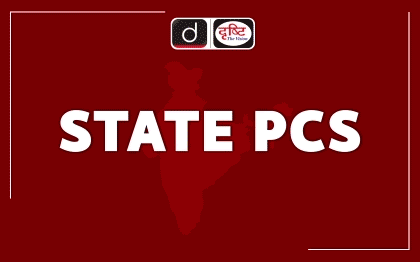
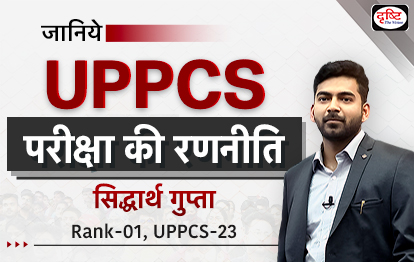

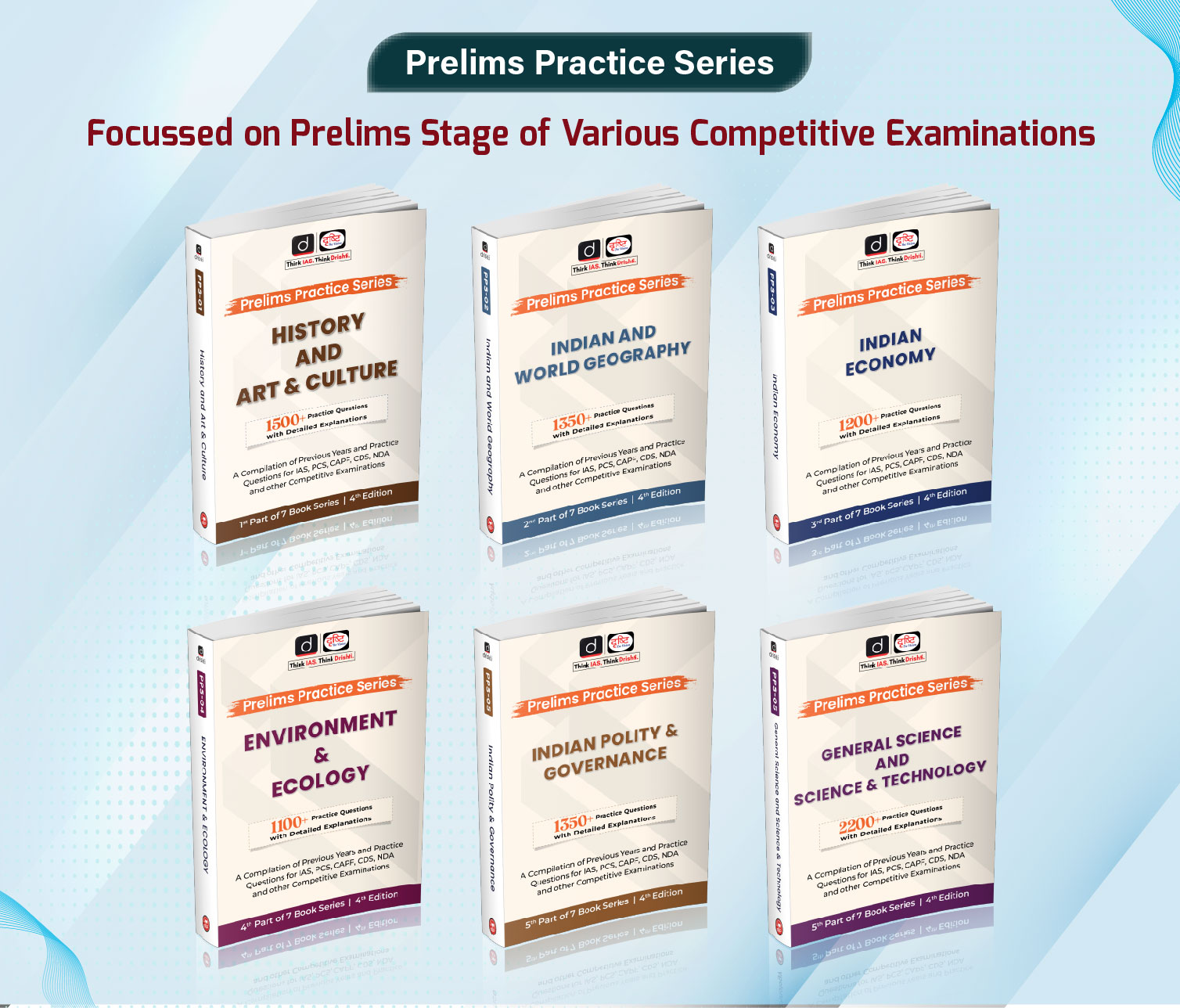




%20MPPCS%202025%20Desktop%20E.jpg)
%20MPPCS%202025%20Mobile%20E%20(1).jpg)

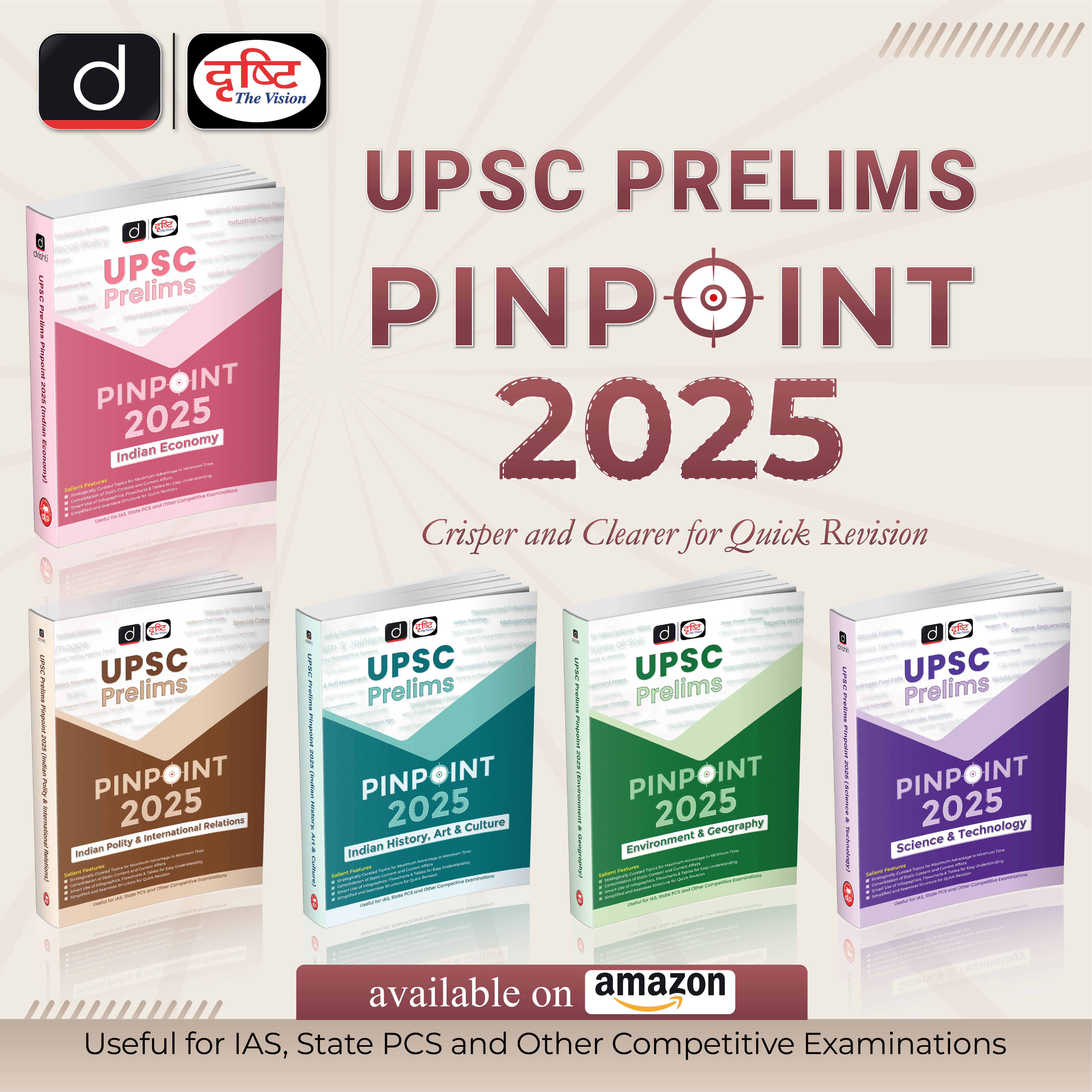







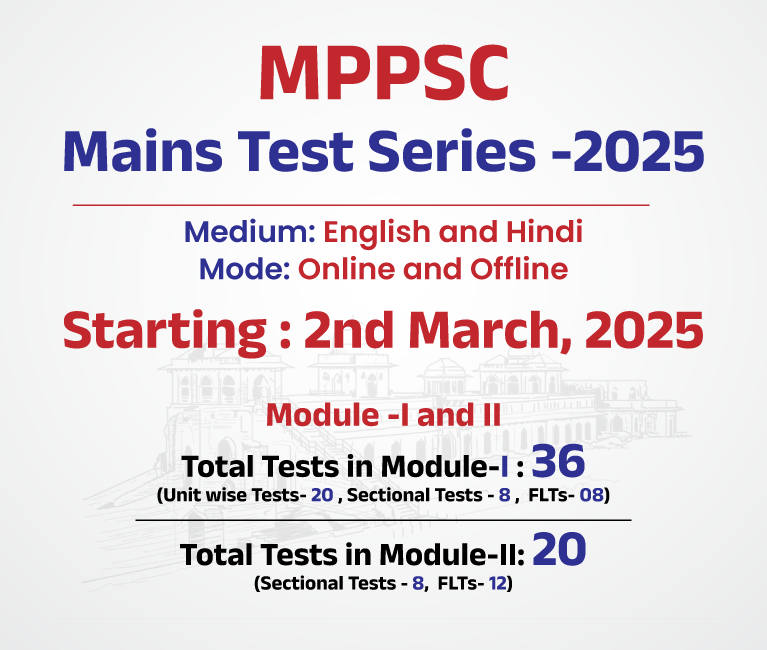

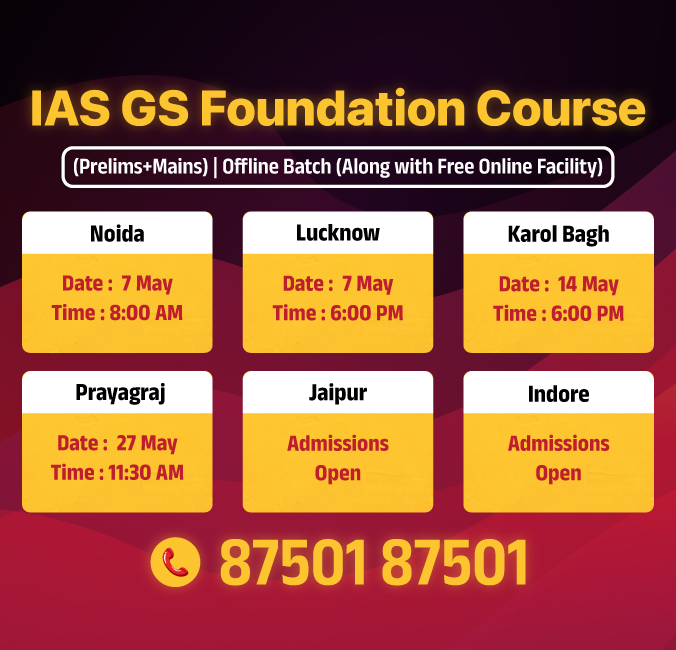





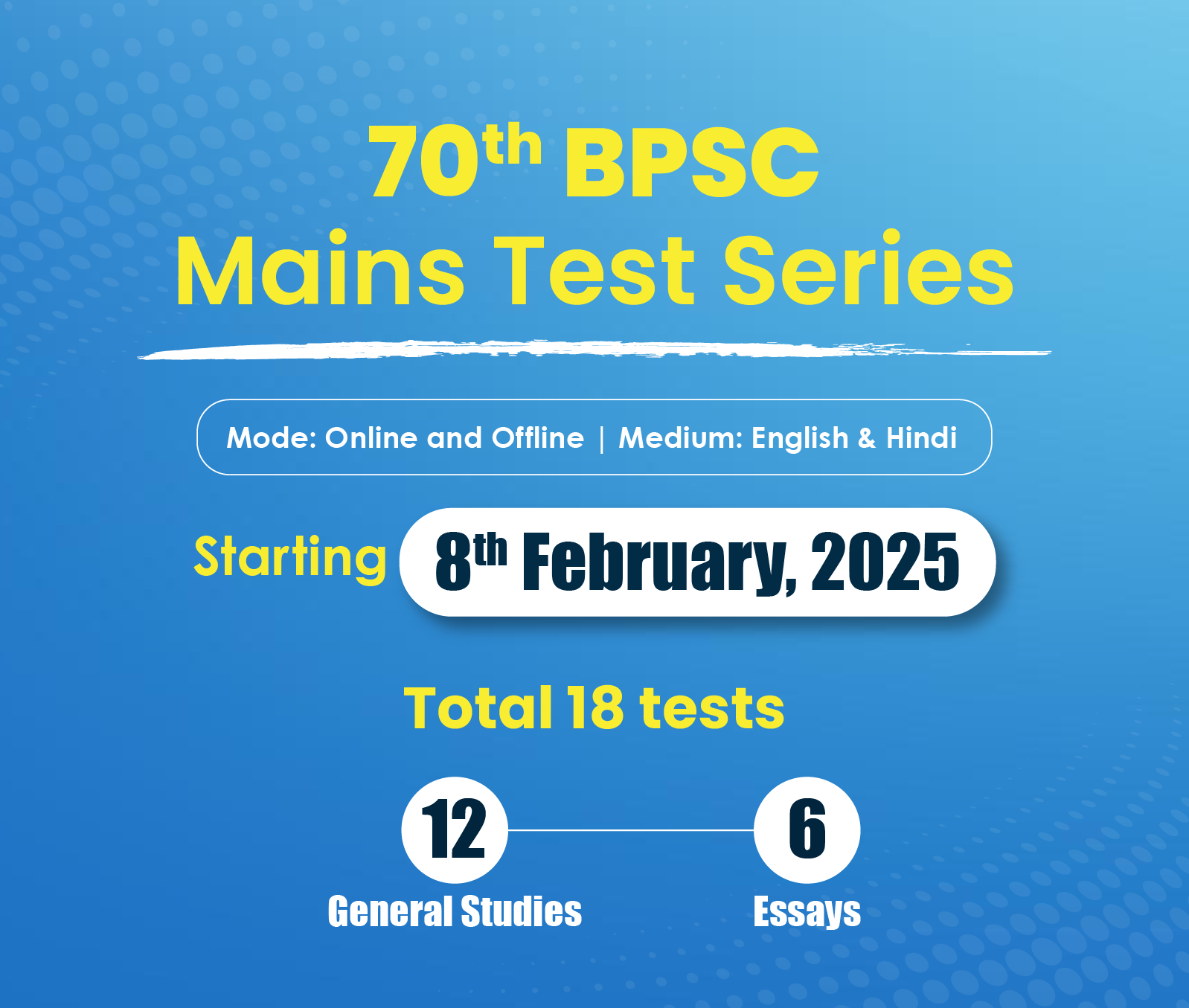



 PCS Parikshan
PCS Parikshan
